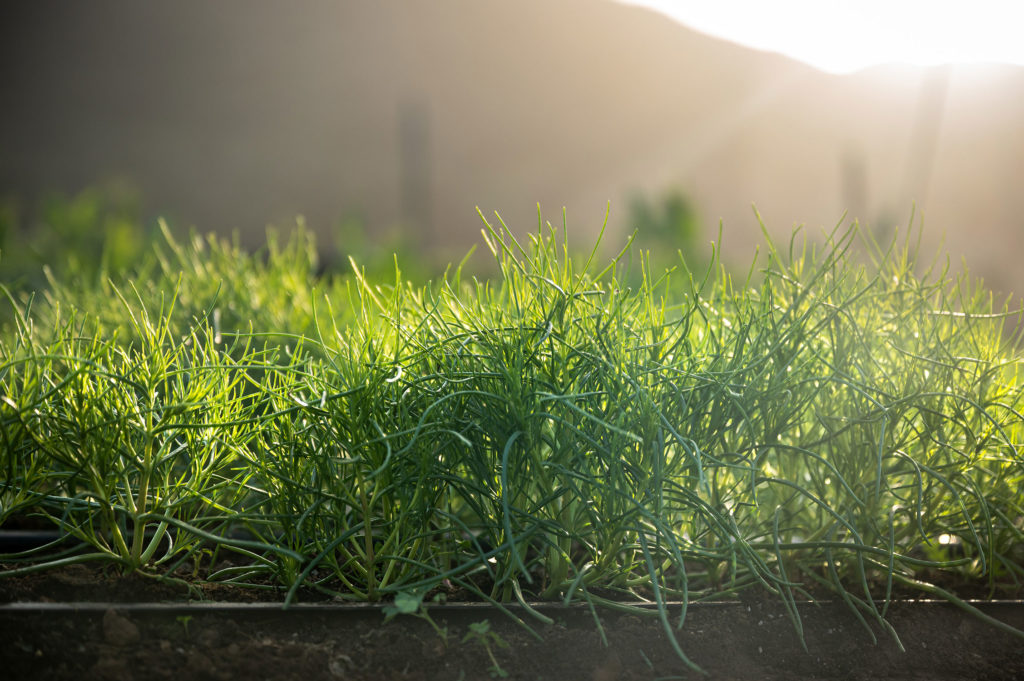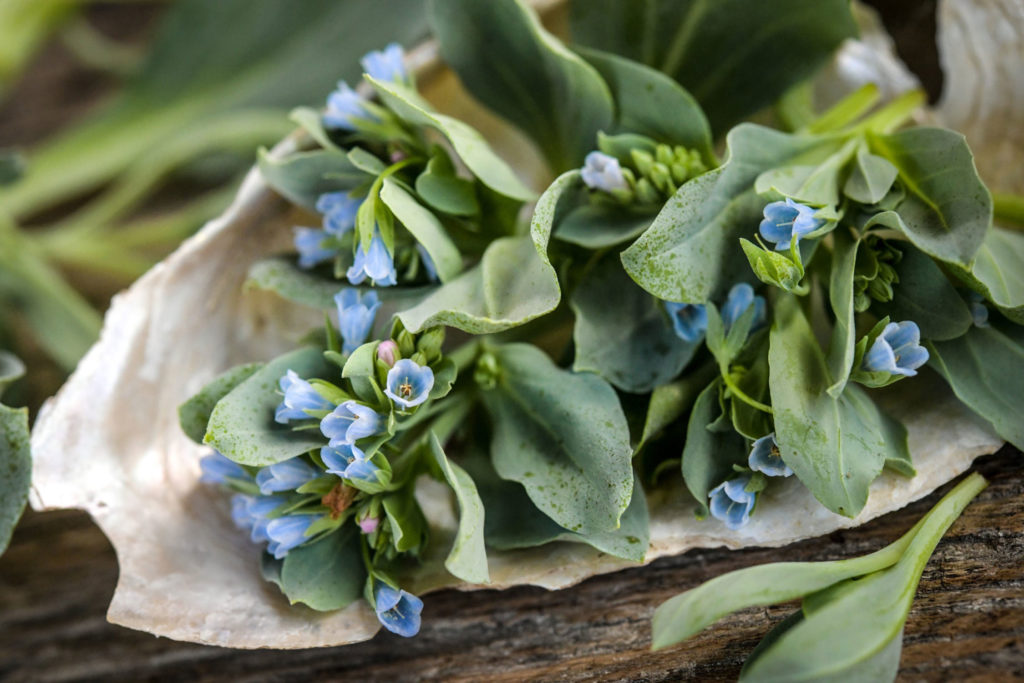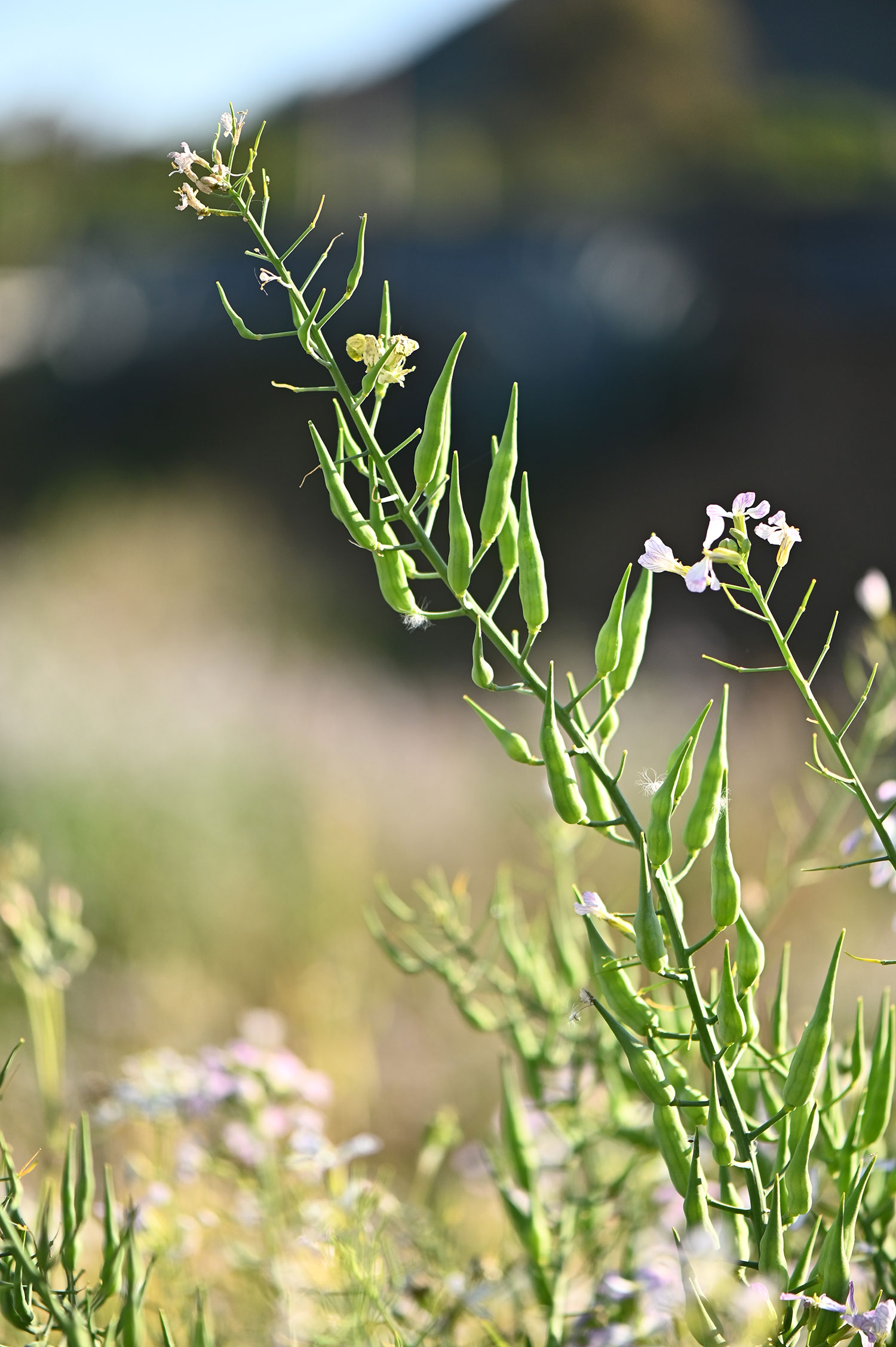
8 Surprising Must-Have Seeds for Your Vegetable Garden
A James Beard Award-winning chef and a farmer to Michelin-starred chefs weigh in on what to grow this season.

No matter how long you’ve been in the garden game, seed catalog browsing can feel like an endurance sport. Equal parts exciting and anxiety-inducing, one can’t help but feel slightly overwhelmed with the choices. So many pretty pictures, so many delicious ideas… too many plants bookmarked. Yet, our eyes glaze over with possibilities!

The Low-Water Gardening Guide
If you've been looking for new ways to save water in your garden, or want to redo it entirely, let this be the year you make it happen. Our 8-week newsletter series can show you how. Click the button below to subscribe!
Each year I’m always amused by a few wild card cultivars that seem to have gotten the PR treatment as the “coolest thing to be growing” this year. While I’m hesitant to attach the word “trendy” or “must-have” onto any sort of plant, I do think experimenting and trying a few “of the moment” seeds is essential to learn and grow not only as a gardener, but as a home cook.
That being said, there are a few seeds I want to give a little extra horticultural hype to this year, a few home-grown culinary considerations that just might perk up your kitchen and give you bragging rights within your own growing circle. So I invited a James Beard Award-winning chef, Brandon Jew, and Aaron Choi, owner of specialty farm Girl & Dug, to ponder the produce worth growing this season.
Whether you’re new to filling your raised bed with green goodness, or a seasoned guardian of the garden, we think these choice plants just might become new favorites. Besides, who doesn’t love a little plot-to-plate challenge and the victory dance that (sometimes, not always) comes along with it on harvest day? Let’s grow!

Courtesy of Brandon Jew
First up, we’re chatting with chef Brandon Jew, who works closely with local farms to cultivate specific heirlooms for use in his acclaimed San Francisco restaurant Mr. Jiu’s. He’s currently plotting out the whole year with Sonoma Mountain Farms focusing on “things that can be grown and used both sautéed or fresh.” What I love about Jew’s approach with vegetables is his appreciation that a plant can be used in all its parts and stages of life—from sprouts to seed heads, there’s a whole lot of new flavor to discover. Let’s dive into a few of our shared faves:
1. Chinese Chives

Slovegrove/Getty Images
If I could personally write a love letter to one item in my garden this year, it would be Chinese chives (also known as flowering Chinese leek) and Jew agrees. Both flat leaf and flowering garlic chives bring more flavor and texture to a dish than traditional chives, especially when using the blossom heads. Jew suggests, “When you’re looking to caramelize, use the flat leaves due to less water content for a quicker char.” He also clues us in to some upcoming menu additions featuring these chives, admitting he’s been “inspired to experiment with them juiced and used in new ways such as stocks and vinaigrettes or even as seasoning at the very end of a dish, like a finishing oil.” We can’t wait to come in and taste-test that creation!
From a gardening perspective, these chives are the perfect allium addition. Slow to bolt in heat and also frost-resistant, this plant is a perennial providing highly fragrant flat leaves and delicate white flowers with a distinct garlic flavor year round. Not to mention you’ll be attracting bees and butterflies with the blooms and providing pest control for surrounding plants prone to unwanted guests like aphids, mites, Japanese beetles… and even pesky rabbits.
2. Fava Beans

Baker Creek Heirloom Seeds/rareseeds.com
Whether you’ve noticed it or not, the fava bean is having a moment. They seem to be on every menu, not to mention topping market reports and looking to be the next big thing in plant protein… favas are more fabulous than ever.
Serving them with mapo tofu at Mr. Jui’s, Jew uses these beans as a nod to the dish’s use of doubanjiang bean paste which is also made with favas. For the perfect spring snack, Jew suggests harvesting favas when they are young—the fresh pods are edible and can be lightly battered and fried with just a little salt and pepper. I literally cannot wait to pluck my first pods to try this.
Delicious thoughts of fried bites aside, favas make for one of the easiest cover crops in the garden, which not only fix nitrogen in the soil, but also improve soil texture, suppress weeds, retain moisture, and attract pollinators. So consider this double-duty legume for those resting beds. We suggest trying out a few unexpected heirloom varieties in your mix such as the vibrantly colored Bolivian Purple (that is if you can still find them).
3. Nasturtium

Girl & Dug Farm
Sure it grows everywhere, some even consider it a weed, but nasturtium continues to make it onto plots and plates across the west. Chef Jew likes to use the whole plant, including the fresh seed pods which are fermented and treated like capers. “I really find they are close to the flavor of white pepper and I like to use it in our hot and sour soup; that acidity and spice gives a fresher flavor,” he says of using the fresh leaves.
Try incorporating different colored blooms and variegated leaves into your growing mix for a chic culinary moment—this Alaska Mix covers all those bases in one packet. We like to use this plant as pest control in the garden as well. When planted in areas where aphids are problematic, they can be used as “trap plants” to deter bugs from more precious produce.
4. Amaranth

Penpak Ngamsathain/Getty
I’ve been grabbing bunches of magenta-striped amaranth at the farmers market for years, so I decided it was time to sow it for myself. It’s an incredibly effortless plant to grow; wait until warmer spring days and place seeds directly into soil. They require less water than other greens and when harvested young, they are tender while offering some blushy pinks and purples to your salad mix.
This is yet another plant that Jew likes to use in all its stages, from micro garnish to sauteed greens. This powerful plant also produces prolific seed heads which he likes to use in a cracker that has a really nice earthy cereal-like flavor when toasted. These seeds are quite versatile to cook with—try puffing, baking, or even cooking in broth like a grain.
Sprout-to-seed cooking not your thing? We suggest growing these for the gorgeous colored tassels (from magenta to rusty orange), which can be harvested late summer through fall before the seed heads fully mature, making for an architectural and bold addition to your home-grown flower arrangement.

Girl & Dug Farm
Next we’re heading south to San Diego, to chat with Girl & Dug owner Aaron Choi, whose farm provides exceptional vegetal fare to the West’s best restaurants, not to mention Michelin-starred chefs. I was first introduced to their offerings through the harvest-to-order Ssam Box, which included a mix of Chrysanthemum Leaf and ice plant, and needless to say they’ve since inspired the way that I grow and cook different types of garden greens to this day. Both fans of unexpected flavors, and inspired by their own farm favorites, we’ve identified some wild card (but wildly amazing) garden additions that will definitely make you stand out from the standard veggie plot this year:
5. Oca

Girl & Dug Farm
If you’re looking to up your potato game, why not try a tasty tuber from Peru? Oca, as Girl & Dug’s website describes, ”tastes like a baked potato with a dollop of sour cream, sprinkled with MSG.” Color us intrigued, and colorful indeed—with hues spanning from near black to pale striped pink, this is one show-stopping spud.
These can be grown both in containers or in ground, however from Choi’s experience they have a reputation of being hard to kill, but also hard to succeed with. The trick is to plant mid-late spring, giving plenty of time for tubers to mature for a November/December harvest. Extreme heat can be their demise, so establishing in partial shade and keeping an eye on the weather throughout the summer months is key. There are currently only a few specialty nurseries offering these tubers, so if you’re a little intimidated by the idea of committing to cultivating your own, you can taste Girl & Dug’s selection of seven varieties available… and you know, set one aside to sprout so you can try growing one of your favorites at home.
6. Agretti

Girl & Dug Farm
Word on the street is there’s an increased chef demand for a lesser known Italian heirloom called agretti. Coincidentally, it’s the first year I’ve started to see these seeds offered in more than one catalog—apparently the restaurants requests are coming into the farm as well. Choi admits they can be extremely fickle to germinate (think 1-2 weeks before even seeing signs of life), but once it starts growing it “does it thing” and takes off.
Choi adds that there is a definite shift towards succulents in the culinary world, noting “purslane has been a thing for years, but we’re seeing steady increases from chefs including our famed iced plant and ‘stone vine’ which is grassy, with almost the essence of cucumber peel.”
If you want to add agretti to your growing wish list, make sure to grab seeds now as they have a very limited February/March availability window and must be planted within the first few weeks of receipt. Its flavor is bitter and slightly sour, and is most often braised in olive oil and served alongside a gorgeous piece of fish. Consider this culinary challenge accepted and seeds ordered!
7. Oyster Leaf

Baker Creek Heirloom Seeds/rareseeds.com
Edible flowers are nothing new, but Choi clues me in on a new-to-me bloom from the Borage family I can’t wait to try. Oyster Leaf, mostly known for its thick, tender leaves that have a similar briny taste to oysters (some even say they detect notes of seaweed). They also have gorgeous blue bell-shaped flowers that have a similar flavor of the sea. This prized pick comes with a warning, Choi admits that it has a very low germination rate, but once you have success with the plant, it is vigorous and has the potential to overwinter in more mild climates. So make sure to start several more seeds than you think you need and keep those fingers crossed for their returning rewards.
8. Radish Pods

Girl & Dug Farm
We’ve all had the casualty of plants going to seed before harvest day, so I was delighted to discover that Girl & Dug offers one of my favorite “garden failures of flavor”—the radish pod. Yes, you can eat the seed pod that forms after the radish plant flowers and it is incredible when pickled. So this year we’re encouraging home growers to skip the radish root and wait for the real reward: the seed pod. Having discovered this delicacy by accident a few years ago, I asked Choi if there was a particular radish that might produce the best pods and he delivered the deets noting, “Purple daikon stands out as the all time favorite with dramatic mauve colored pods that are both spicy and sweet”. Runners up include watermelon radish and lime radish with bright green pods that give a little spicier kick.
Now that our shopping carts are filled with these last minute seed considerations, it’s time to make room for our future flavor-filled transplants. The spring season is upon us, so here’s to trying something new in the garden and on your plate this year—we hope you’ve been inspired, too!
Read the Current Issue Here!
Get one year of Sunset—and all kinds of bonuses—for just $29.95. Subscribe now!
